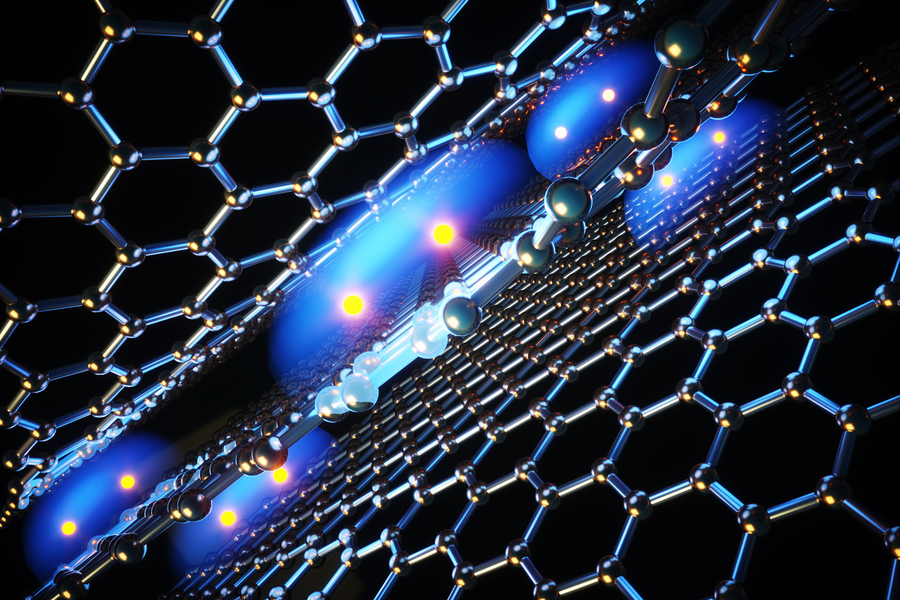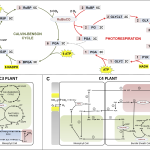Twisted graphene superconductors are emerging as groundbreaking materials that could change the landscape of modern technology. These innovative superconducting materials possess the unique ability to conduct electricity without any resistance, a feature that has long fascinated scientists and engineers alike. By exploiting the unusual properties of twisted stacks of graphene, researchers are paving the way for advancements in energy-efficient detectors, lossless power transmission, and even quantum computing applications. The implications are vast, ranging from powering levitating trains to enhancing space exploration technologies. As research progresses, twisted graphene superconductors promise to be at the forefront of the next generation of high-performance materials.
Also referred to as twisted bilayer graphene, these extraordinary superconductors are gaining traction for their potential in delivering superior electrical conductivity without losses. The exciting behavior of electrons within these layers has been linked to transformative applications including the development of high-performance sensors, cutting-edge energy solutions, and revolutionary advancements in the field of quantum technologies. With their unique crystalline structure and the capacity to facilitate unprecedented electrical interactions, these superconducting materials open new avenues for lossless energy transmission and advancements in scientific instruments. As researchers delve deeper into the mechanics of twisted graphene, the potential for innovations in transportation and beyond appears boundless.
The Revolutionary Potential of Twisted Graphene Superconductors
Twisted graphene superconductors are emerging as a groundbreaking advancement in the field of superconducting materials. Their unique structure presents opportunities for lossless power transmission, a concept that has tantalized physicists for decades. Unlike traditional superconductors, which operate at ultra-low temperatures, twisted graphene reveals superconducting properties under conditions that could potentially be more accessible. This development opens the door for innovative applications in areas such as quantum computing and energy-efficient detectors.
Moreover, the ability of twisted graphene to facilitate superconducting behavior is derived from its unique electron pairing mechanism. In conventional superconductors, electrons tend to repel each other due to their negative charge; however, in twisted graphene, they engage in a complex ‘quantum dance’ that leads to the formation of pairs. As a result, these paired electrons can move freely, enabling extremely efficient power flow for devices and systems that rely on high-speed energy transmission.
Advancements in Quantum Computing with Graphene
The application of twisted graphene superconductors in quantum computing is particularly noteworthy. Quantum computers rely on superconducting qubits for calculations, and the distinct properties of twisted graphene could lead to faster and more efficient qubit performance. With its promising superconducting characteristics, graphene offers the potential to create more stable qubits, which are crucial for the scalability of quantum computing systems. This advancement could enhance computational power, significantly impacting various fields such as cryptography and complex modeling.
By implementing twisted graphene structures within quantum chips, researchers may uncover new pathways for error correction and increased coherence times. The novel superconducting behavior observed within twisted graphene stacks provides a fundamentally different approach than those seen in conventional superconductors like aluminum. Therefore, exploring these materials could accelerate the development of next-generation quantum technologies.
Energy-Efficient Detectors for Space Exploration
The exploration of space has always demanded highly sensitive and efficient detectors capable of operating in extreme conditions. Twisted graphene superconductors offer a promising solution in this regard. Their ability to operate with minimal energy expenditure makes them ideal candidates for constructing lightweight and energy-efficient detectors for space missions. This is particularly advantageous, as space exploration often requires robust technologies that can function in the near-vacuum environment where power is at a premium.
Moreover, the potential of twisted graphene to achieve high resolution in detector applications could revolutionize how we gather data in space. Given that light is scarce in these environments, the high sensitivity of twisted graphene detectors could ensure that even the faintest signals are picked up, providing new insights into the universe. As researchers continue to refine these technologies, twisted graphene may well become a cornerstone of future space exploration efforts.
The Mechanics Behind Superconductivity in Twisted Graphene
Understanding the mechanics of superconductivity in twisted graphene is central to harnessing its benefits. Research indicates that the peculiar pairing of electrons leads to the formation of a superfluid state, where electrons flow without resistance. This phenomenon differs from conventional superconductors, where interactions may hinder overall performance. By studying how these electrons pair and interact at low temperatures, scientists aim to unravel the underlying processes governing superconductivity in graphene.
Significantly, this understanding could pave the way for developing materials with tailored properties designed for specific applications, such as lossless power transmission systems and high-performance quantum computers. As researchers continue to delve deeper into the quantum interactions within twisted graphene, the knowledge gained may lead to breakthroughs that utilize these materials in ways previously thought impossible.
The Future of Transportation: Levitating Trains and Beyond
Transportation technologies are on the brink of a major transformation, and twisted graphene superconductors may play a pivotal role in this evolution. The capacity for lossless power transmission can drastically change the efficiency of systems like levitating trains, which depend on superconducting magnets for their operation. These trains could travel at unprecedented speeds with reduced energy costs, reshaping public transport and freight systems alike.
Twisted graphene superconductors could enable trains to levitate continuously over tracks using magnetic repulsion, minimizing friction and maximizing speed. As research progresses, the implementation of these advanced materials in transit systems may lead to rapid, energy-efficient travel options, further enhancing connectivity across regions and reducing environmental impact.
Potential Challenges in Harnessing Twisted Graphene Properties
While the potential of twisted graphene superconductors is vast, challenges remain in their practical application. Currently, the mass production of graphene materials is complex and costly, limiting their widespread use. To make twisted graphene viable for commercial applications, researchers need to develop efficient manufacturing techniques that can produce high-quality materials consistently and economically.
Furthermore, understanding the stability and longevity of twisted graphene under various environmental conditions is crucial for future technologies. Scientists must investigate how these materials perform over time, especially under fluctuating temperatures and conditions typical of both terrestrial and extraterrestrial environments. Overcoming these challenges will be essential for realizing the potential of twisted graphene in various applications.
The Role of Research Institutions in Graphene Advancement
The collaborative efforts of research institutions are crucial for advancing the understanding and utilization of twisted graphene. Teams from prestigious universities and organizations, such as Harvard and MIT, are at the forefront of this exploration, conducting experiments that elucidate the unique properties of twisted graphene. Their work not only contributes to fundamental scientific knowledge but also propels innovation in superconducting materials that can transform technology.
Additionally, partnerships with organizations like Raytheon-BBN Technologies showcase the importance of interdisciplinary collaboration in tackling the challenges associated with emerging technologies. By pooling resources and expertise, these partnerships can accelerate the development of practical applications that stem from twisted graphene research, ensuring that advancements lead to real-world benefits in energy, transportation, and beyond.
Graphene’s Integration into Energy Systems
As we explore energy systems for the future, twisted graphene superconductors could redefine how we generate, transmit, and utilize energy. Their low resistivity allows for efficient energy transfer, enhancing the performance of the electric grid and promising an era of lossless power transmission. This capability not only reduces energy waste but also paves the way for the integration of renewable energy sources into existing systems, optimizing energy consumption.
Moreover, this efficient energy integration provides a platform for developing smart energy grids that adapt to consumer needs while minimizing environmental impacts. The adoption of twisted graphene in energy infrastructure could significantly reduce operational costs, promote sustainability, and enhance the reliability of electricity supply, ultimately revolutionizing energy consumption patterns globally.
Future Directions in Superconductivity Research
The exploration of twisted graphene superconductors is just beginning, yet its implications for the future of materials science, energy transmission, and electronics are tremendous. Researchers are initiating new projects aimed at uncovering additional properties of twisted graphene and expanding its applications beyond current understandings. Innovations in superconductivity could usher in a new age, where energy efficiency is paramount in technology.
To fully explore these future directions, interdisciplinary collaboration will remain vital. As scientists and industry leaders work together, the insights gained from twisted graphene research may lead to groundbreaking advancements that reshape the way we live, work, and communicate. The pursuit of knowledge in superconductivity could drive technology forward, creating a future rich in possibilities and innovations.
Frequently Asked Questions
What are twisted graphene superconductors and why are they important?
Twisted graphene superconductors are materials formed by stacking sheets of graphene at a precise angle, leading to unique superconducting properties. They are significant because they could enable lossless power transmission, promote energy-efficient detectors for space exploration, and enhance quantum computing capabilities.
How do twisted graphene superconductors differ from traditional superconducting materials?
Twisted graphene superconductors exhibit different electron pairing mechanics compared to traditional superconductors like aluminum. This unique behavior opens up new avenues for research into superconductivity, which may lead to advancements in energy-efficient technologies and quantum computing.
What role do twisted graphene superconductors play in quantum computing?
Twisted graphene superconductors can enhance quantum computing by facilitating the creation of qubits that operate with reduced energy loss and increased coherence times. This improves the overall efficiency and stability of quantum computing systems.
Can twisted graphene superconductors improve lossless power transmission?
Yes, twisted graphene superconductors have the potential to revolutionize lossless power transmission by allowing electricity to flow without resistance. This could significantly reduce energy waste in electrical grids.
How might twisted graphene superconductors contribute to the development of levitating trains?
Twisted graphene superconductors could contribute to levitating trains by enabling more efficient magnetic levitation systems. Their unique superconducting properties could lead to advancements in the technology behind magnetic levitation, allowing for smoother and faster train travel.
What are energy-efficient detectors and how are twisted graphene superconductors related to them?
Energy-efficient detectors are devices designed to minimize power consumption while providing high sensitivity and accuracy in detecting signals. Twisted graphene superconductors may serve as the basis for these detectors, particularly in the context of space exploration, where lightweight and power-efficient technology is crucial.
What future applications could arise from the research on twisted graphene superconductors?
Future applications of twisted graphene superconductors could include advanced quantum computing systems, ultra-sensitive detectors for space missions, improved magnetic levitation for transportation, and innovative energy-efficient solutions for power transmission.
How does the electrodynamics of twisted graphene superconductors differ from conventional superconductors?
The electrodynamics in twisted graphene superconductors shows a different interaction of electron pairs that involves complex quantum behaviors not typically found in conventional superconductors. This provides insights into new superconducting phenomena and potentially distinguishes them from traditional materials.
| Key Points |
|---|
| Twisted graphene superconductors could lead to lossless power transmission, quantum computing advancements, and energy-efficient detectors. |
| Developed by researchers from Harvard, MIT, and Raytheon-BBN Technologies, highlighting the importance of layered graphene structures. |
| Twisting graphene layers changes their properties drastically, affecting how electrons interact and pair up. |
| Understanding this quantum ‘dance’ is essential to further explore superconductivity in these materials. |
| Microwave technology is being used to study the resonant vibrations of superconducting electrons for deeper insights. |
| Twisted graphene offers potential for ultra-sensitive detectors in space exploration due to its energy-efficient properties. |
Summary
Twisted graphene superconductors hold great promise for transforming various technological fields, including power transmission and computing. The unique behavior of superconducting electrons in twisted graphene layers suggests that this material could lead to innovative applications, such as energy-efficient detectors, which are crucial for advancements in space exploration. As research progresses, the understanding of how these superconductors function may unlock new pathways in materials science, making twisted graphene superconductors a topic of significant interest for the future.




